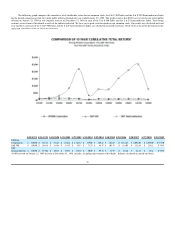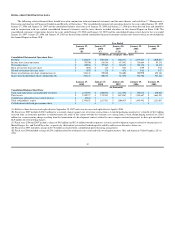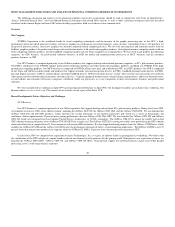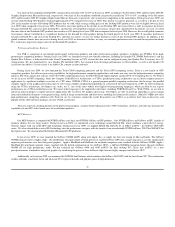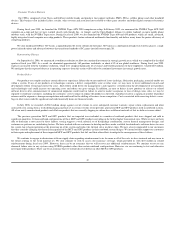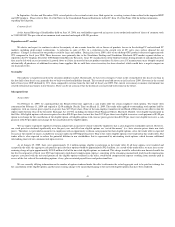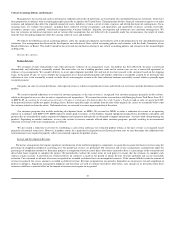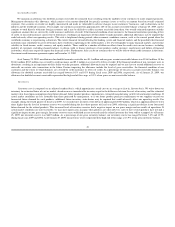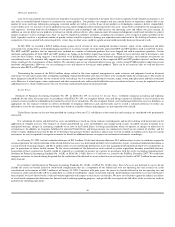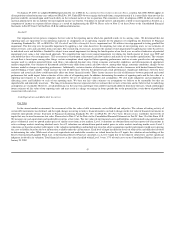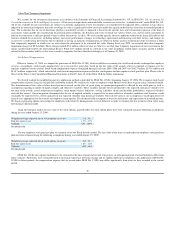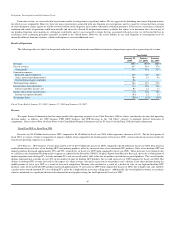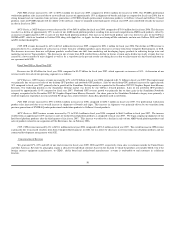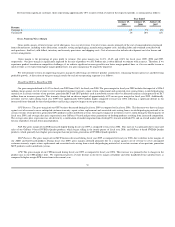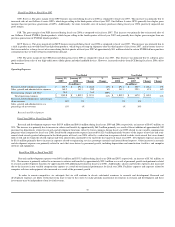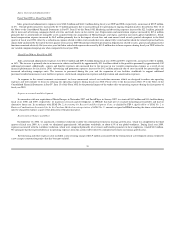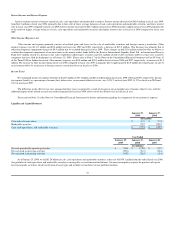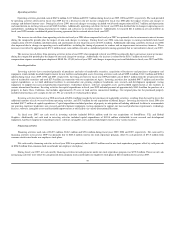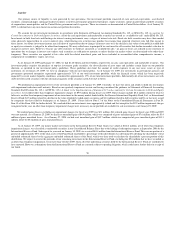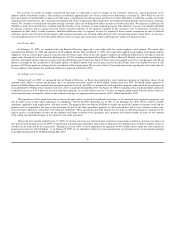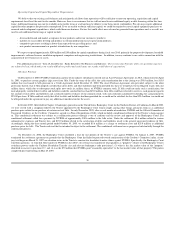NVIDIA 2008 Annual Report Download - page 51
Download and view the complete annual report
Please find page 51 of the 2008 NVIDIA annual report below. You can navigate through the pages in the report by either clicking on the pages listed below, or by using the keyword search tool below to find specific information within the annual report.
Other Than Temporary
I
mpairment
We account for our investment instruments in accordance with Statement of Financial Accounting Standards No. 115, or SFAS No. 115, Accounting for
Certain Investments in Debt and Equity Securities. All of our cash equivalents and marketable securities are treated as “available
-
for
-
sale” under SFAS No. 115.
All of our available
-
for
-
sale investments are subject to a periodic impairment review. Investments are considered to be impaired when a decline in fair value is
judged to be other
-
than
-
temporary when the resulting fair value is significantly below cost basis and/or the significant decline has lasted for an extended period of
time. The evaluation that we use to determine whether a marketable security is impaired is based on the specific facts and circumstances present at the time of
assessment, which include the consideration of general market conditions, the duration and extent to which fair value is below cost, and our intent and ability to
hold an investment for a sufficient period of time to allow for recovery in value. We also consider specific adverse conditions related to the financial health of and
business outlook for an investee, including industry and sector performance, changes in technology, operational and financing cash flow factors, and changes in
an investee
’
s credit rating. Investments that we identify as having an indicator of impairment are subject to further analysis to determine if the investment is other
than temporarily impaired, in which case we write down the investment to its estimated fair value. During fiscal year 2009, we recorded other than temporary
impairment charges of $9.9 million. These charges include $5.6 million related to what we believe is an other than temporary impairment of our investment in the
money market funds held by the International Reserve Fund; $2.5 million related to a decline in the value of publicly traded equity securities and $1.8 million
related to debt securities held by us that were issued by companies that have filed for bankruptcy as of January 25, 2009.
Stock
-
based Compensation
Effective January 30, 2006, we adopted the provisions of SFAS No. 123(R)
,
which establishes accounting for stock
-
based awards exchanged for employee
services. Accordingly, stock
-
based compensation cost is measured at grant date, based on the fair value of the awards, and is recognized as expense over the
requisite employee service period. Stock
-
based compensation expense recognized during fiscal years 2009, 2008 and 2007 was $162.7 million, $133.4 million and
$116.7 million, respectively, which consisted of stock
-
based compensation expense related to stock options and our employee stock purchase plan. Please refer to
Note 2 of the Notes to the Consolidated Financial Statements in Part IV, Item 15 of this Form 10
-
K for further information.
We elected to adopt the modified prospective application method as provided by SFAS No. 123(R), beginning January 30, 2006. We recognize stock
-
based
compensation expense using the straight
-
line attribution method. We estimate the value of employee stock options on the date of grant using a binomial model.
The determination of fair value of share
-
based payment awards on the date of grant using an option
-
pricing model is affected by our stock price as well as
assumptions regarding a number of highly complex and subjective variables. These variables include, but are not limited to, the expected stock price volatility over
the term of the awards, actual and projected employee stock option exercise behaviors, vesting schedules, death and disability probabilities, expected volatility
and risk
-
free interest. Our management determined that the use of implied volatility is expected to be more reflective of market conditions and, therefore, could
reasonably be expected to be a better indicator of our expected volatility than historical volatility. The risk
-
free interest rate assumption is based upon observed
interest rates appropriate for the term of our employee stock options. The dividend yield assumption is based on the history and expectation of dividend payouts.
We began segregating options into groups for employees with relatively homogeneous exercise behavior in order to calculate the best estimate of fair value using
the binomial valuation model.
Using the binomial model, the fair value of the stock options granted under our stock option plans have been estimated using the following assumptions
during the year ended January 25, 2009:
For our employee stock purchase plan we continue to use the Black
-
Scholes model. The fair value of the shares issued under the employee stock purchase
plan has been estimated using the following assumptions during year ended January 25, 2009:
SFAS No. 123(R) also requires forfeitures to be estimated at the time of grant and revised, if necessary, in subsequent periods if actual forfeitures differ from
those estimates. Forfeitures were estimated based on historical experience. If factors change and we employ different assumptions in the application of SFAS No.
123(R) in future periods, the compensation expense that we record under SFAS No. 123(R) may differ significantly from what we have recorded in the current
period.
Weighted average expected life of stock options (in years)
3.6
-
5.8
Risk free interest rate
1.7%
-
3.7
%
Volatility
52%
-
105
%
Dividend yield
-
Weighted average expected life of stock options (in years)
0.5
-
2.0
Risk free interest rate
1.6%
-
2.4
%
Volatility
62%
-
68
%
Dividend yield
-
48


